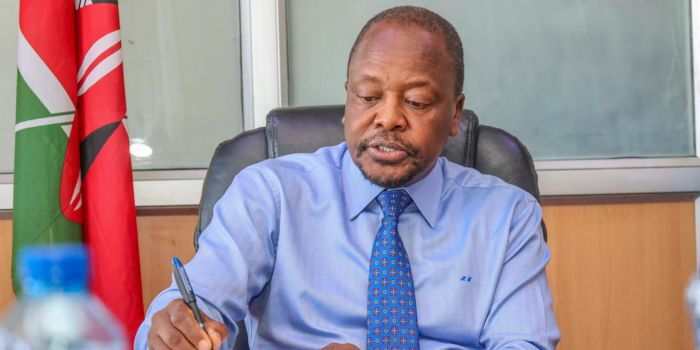By Staff Reporter
Bunyala Cooperative Society has received a pilot agro-mechanization hub to help rice farmers in Bunyala area of Busia County.
The three-year incubation project was launched by the Ministry of Agriculture, Trade and Co-operatives to boost the capacity of farmers
The agricultural machinery was handed to the co-operative society hub at Busagwa Primary school in November 2020 last year by Agriculture Cabinet Secretary Peter Munya.
Speaking at the function, Munya said mechanization was the only way through which Kenya’s rice production deficit that currently stands at 986,000 metric tons can be bridged.
“Kenya imports rice from Pakistan and other countries to meet the shortfall and it’s for that reason that we are implementing sustainable agricultural intensification, mechanization, expansion and marketing strategies to bridge the gap,” said Munya.
The machinery included three pre-planters and three combine harvesters which the CS said will optimize farmers’ outputs by increasing land under rice production in the region by 11,000 acres capable of feeding the entire region.
Busia Deputy Governor Moses Mulomi commended rice farmers for this season’s bumper harvest which increased from an average of 20 bags to 40 bags per acre.
He attributed the increased production to mechanization but asked them to do value addition for rice and fish so that they reap big from their agricultural activities.
“Rice packaged in Bunyala should be availed in supermarkets across the county, same to by-products used in production of feeds and other products, ”said Mulomi.
Bunyala Rice Farmers Cooperative Society chairman Robert Musolo lauded the Agriculture CS for identifying the society as a pilot agricultural hub.
He said membership in the society had increased from 301 in 2019 to 630 currently and they are in process of establishing a Co-op Jirani Bank Agency to enhance saving.
The County Agriculture Executive Moses Osia requested CS Munya to facilitate installation of a rice milling plant donated by the Government of Venezuela through FAO.
Rice is currently the third most important cereal crop after maize and wheat with its consumption estimated at 1,050,000 metric tonnes compared to an annual production of 160,600 metric tonnes.
It is grown mainly by small-scale farmers as a commercial and food crop.
About 80 percent of rice grown in Kenya is from government established irrigation schemes, while the remaining 20 percent is produced under rain-fed conditions.



